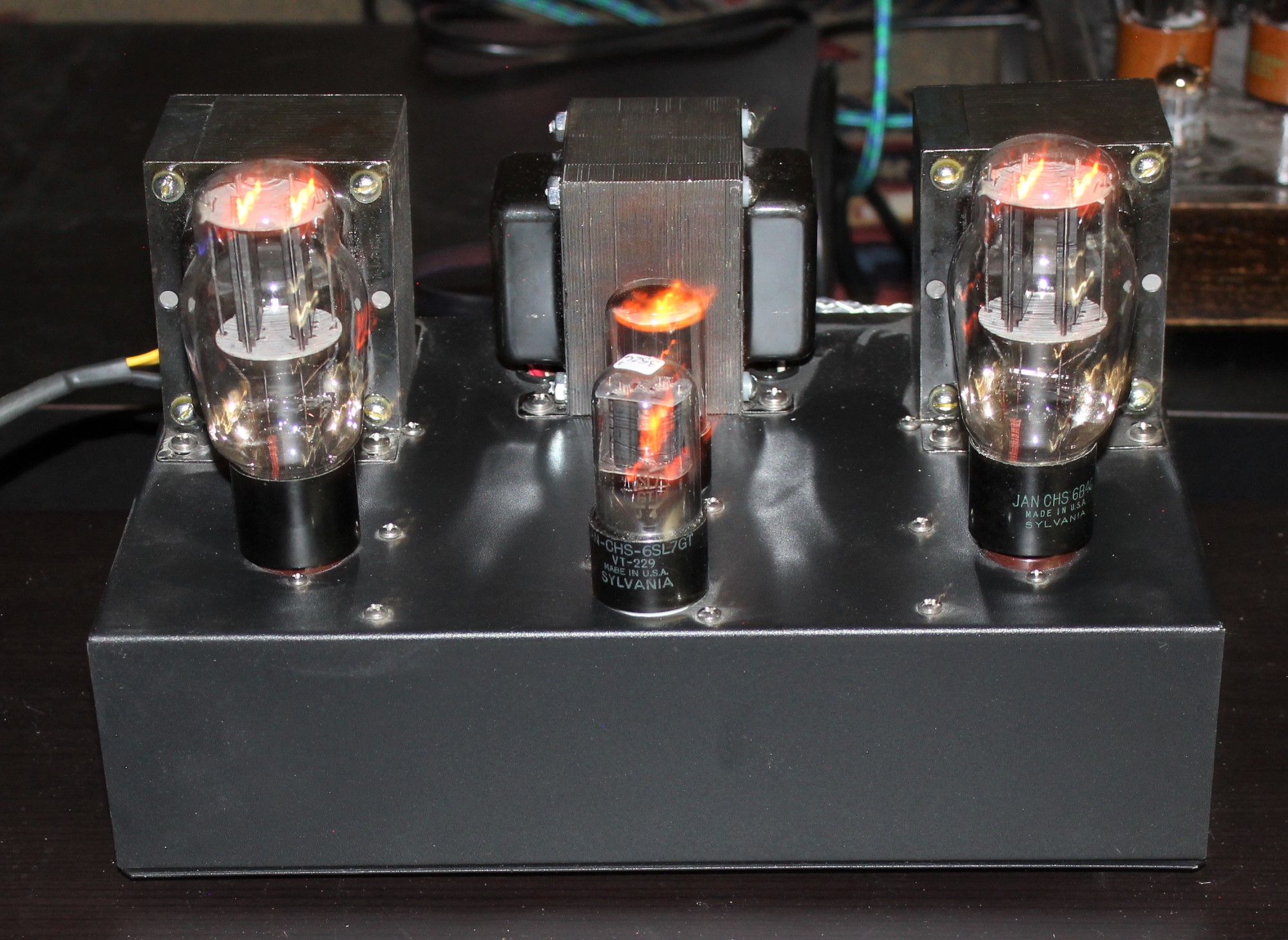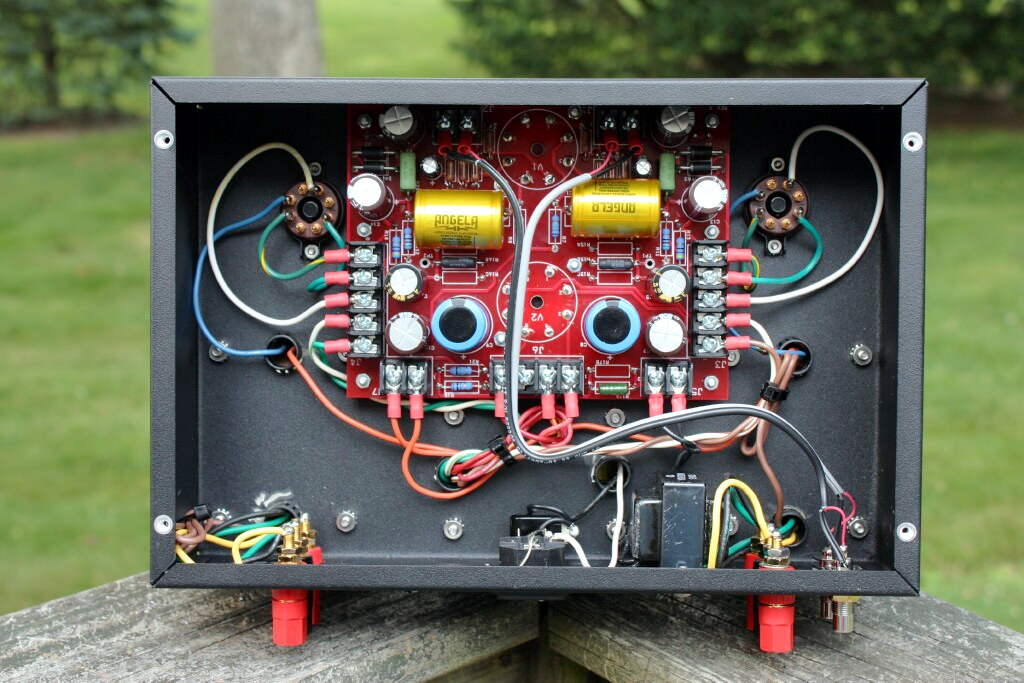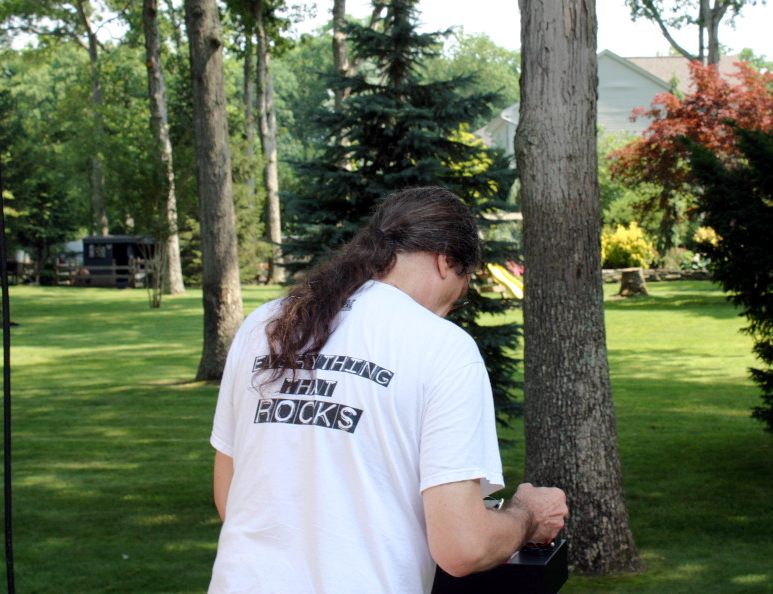get*set*go 6B4G Single Ended Triode Amplifier
Tip #99
Dick Olsher (March 2023)




Way back in 2011 I hooked up with Shannon Parks at diytube.com and purchased a get*set*go 6B4G SET kit. I convinced Tom McNally (see image above) to build the amp for me with one major upgrade: One Electron UBT-3 output transformers. Being the most important component in a tube amp, it made sense to pay a premium for upscale trannies. According to the data sheet, the UBT-3 transformer is a medium-impedance transformer that is designed to be used with classic audio tubes and is an excellent match for the 2A3/6B4G family of power triodes. Of course, diytube.com is no longer active, Shannon having moved on in the interim to found Parks Audio, but the get*set*go (GSG) amp does occasionally pop up on the used market and is well worth seeking out.
At the time I purchased the kit I asked Shannon to share a bit of his background and the story behind the kit’s development. My intent was always to use his story in the context of a review, and even though the following is by now over a decade old, it is still of interest to all of us tube fanatics.
My first foray as a tube enthusiast was building my own Dynaco ST35 clone about ten years ago. Soon I was lusting after the Eico HF-series amps. After I had built my first Eico monoblock clone, Ned Carlson suggested to me that I could use 6B4Gs in the same circuit and use the filament center tap for the cathode bias. Knowing how well the push-pull 2A3 amps were regarded, I thought this was a great idea. I collected as many 6B4Gs from eBay as I could afford, did the modifications and really enjoyed the amps.
At some point, I acquired a stack of Sound Practices magazines. Words can’t describe the joy I found reading them (and re-reading them!). They are the de facto reading material I take on every vacation. Anyhow, it is natural to want to build a single ended amp after being exposed to the evangelistic zeal of those articles. I forget which stack of issues I took on a late summer trip to New Orleans, but the idea to use the 6B4Gs and the Dynaco PA774 with its dual 6.3VAC taps happened there. Triode Electronics had just come out with their own Dynaclone series of transformers, and I had them being used in my own DIY ST35 clone. The idea of “Get set! Go!” came to me there, too. I had been quite familiar with Joseph Esmilla’s classic Simple 45/2A3 amplifier and used it as the template with the subbed 6B4Gs. Doing a quick search for 6.3V rectifiers, I discovered the 6AX5GT. It was indirectly heated which was a must and was a clone of the classic 5Y3. Its voltage drop even helped get the B+ down near the range I needed as a NOS 6B4G’s max voltage rating is 275V. I decided to also use the Dynaco 1.5H choke followed by a second RC circuit. This emulated the ripple reduction of a large 10H choke in a single CLC filter without the bulk or added cost.
I did a prototype board with AC filaments to see how well it worked. 100 ohm pots were used to reject the hum on the 6B4G filaments, but when tweaked I could only get the output noise to 3mV or 4mV. It looked like the 2A3s truly did have a big advantage with their lower 2.5V filaments. I quickly switched to a DC filament arrangement with a second prototype and got the noise to <0.5mV. I used a Schottky diode bridge as standard bridge rectifiers dropped too much voltage. The hum pot tests were consistently 47 ohms and 53 ohms, so I switched these to actual resistors. I believe this has worked well.
I confess I have heard very few single ended amps to compare with the Get*Set*Go, but I’d like to think it can sound as good as any 2A3 amp. We are fortunate to have many options for SE iron at the present time and it offers great flexibility. The 6SL7 is the main compromise, as a two stage driver would be more effective, but sometimes simpler just sounds better anyhow. With some simple mods, 300Bs can be used and modern Sovtek 6B4Gs can be run at much higher voltages. Both can raise the output power significantly in this otherwise 3W amp.
I recently mated the GSG with the Fleetwood Sound Company DeVille loudspeaker in listening room #2 and was amazed at how musical this coupling turned out to be. The DeVille at a sensitivity of 94 dB and a true 8-Ohm impedance is a good match for the GSG. And situated near-field, at six feet from the listening seat, I was able to generate decent loudness levels. I should also mention that I’m currently using a pair of vintage Raytheon 6B4G triodes that are smoother sounding than the Sovteks.
Except for the octal base and 6.3V filament, the 6B4G is equivalent to the 2A3, so it’s not surprising that it sounds like a 2A3. I think that Kevin Davis at Glow in the Dark Audio nailed the sonic essence of the 2A3: “clarity, a subdued warmth, and an overall feeling of ease.” The bass range was also well defined while the soundstage was wide and laid back. It produced the most relaxing presentation I’ve ever experienced. I just closed my eyes and drifted into musical nirvana. Lesson learnt yet again: no worries about the number of watts - the GSG illustrates the potency of the first watt.